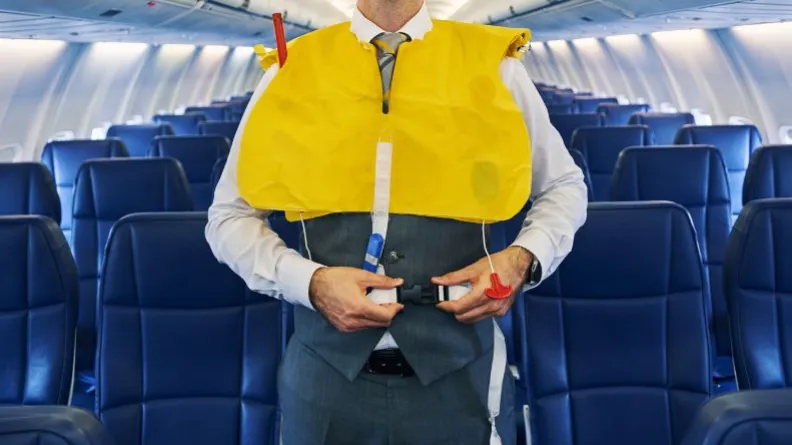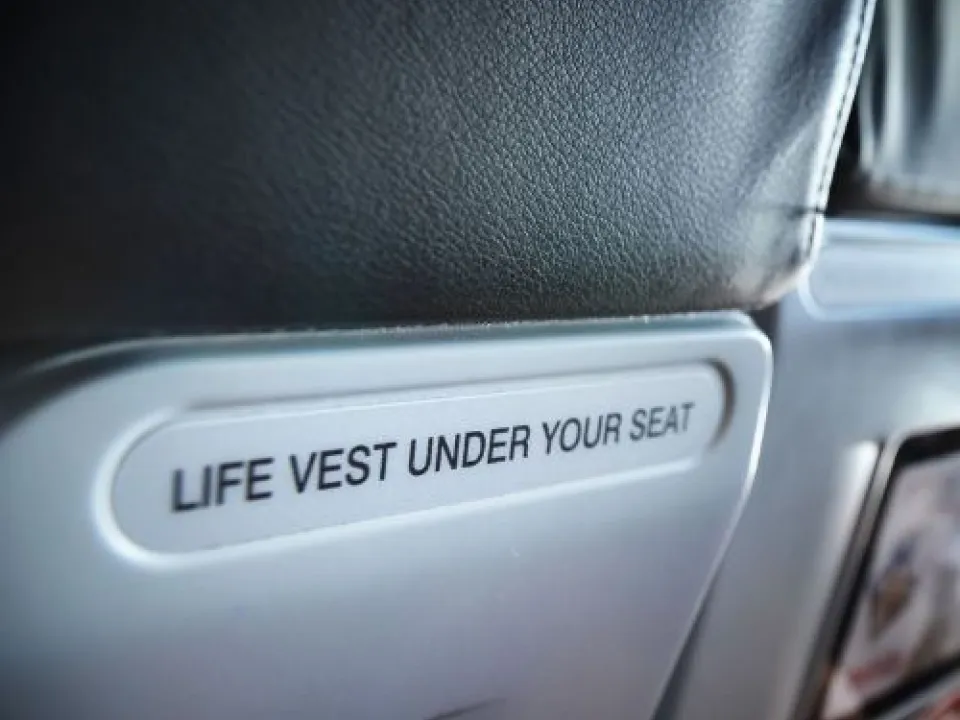Tracking emergency equipment on aircrafts

Benefits
Reduce pre-flight check of emergency equipment to minutes
When carrying out pre-flight checks, airlines often face conflicting needs: Whilst it’s essential to ensure the safety and compliance of critical on-board equipment, time to carry out checks is often limited and flight delays can result in substantial financial penalties as well as dissatisfied passengers.
This conflict is particularly evident when it comes to the inspection of safety equipment, such as life vests, child cots and fire extinguishers which need to be present and working on every flight. But stowage requirements for emergency equipment and its limited life, make checking every item on an aircraft manually time consuming.
Utilising the RFiD Discovery cabin management solution significantly reduces the time cabin staff spend carrying out daily pre-flight checks to minutes, whilst speeding up essential engineering maintenance inspections.
The Solution
Using either passive UHF or BLE technology, the RFiD Discovery system can capture the presence of essential safety equipment and highlight where equipment is either missing or has been tampered with, for example where a life vest has been removed from its pouch.

RFID and BLE tags can be read without line of sight from more than a metre distance. This means that for a pre-flight inspection, a member of the cabin crew simply walks along the inside the aircraft with a handheld RFID reader. This detects the presence of tags attached to key assets in the aircraft, providing an accurate record of which equipment is on board.
How does tracking aircraft safety equipment work?

Each essential item of safety equipment to be checked is fitted with either a passive UHF tag or BLE tag, which contains a unique ID.

Each tag is registered on a central database against the individual asset. The database also contains additional information about the asset such as batch number, serial number, expiration date, required maintenance dates and more.

The presence of tags and therefore the relating assets can simply be detected with a handheld RFID reader which can capture information from multiple tags per second.
Detecting interference with emergency equipment
By using tamper-evident RFID tags on life vest pouches the system can also highlight when a vest has been removed from its bag. These specialist tags seal the pouch and stop sending a signal once the pouch has been opened. This enables cabin staff to easily locate and check any equipment which potentially has been tampered with.
Maintenance checks and audit trail
Using RFID technology does not only speed up daily pre-flight checks. It can also streamline maintenance procedures, end-of-life decommissioning and product recall processes of safety equipment.
Via the handheld RFID reader, maintenance engineers can easily access data held in a central database relating to all tagged safety equipment on board an aircraft. This means, for example, instead of checking every single life vest under each seat, the engineer can see at a glance which equipment is due for service or approaching its end of life.
The results of any checks carried out can then be entered into the handheld reader and transmitted back to the central database to ensure that missing or damaged life jackets can be replaced. This efficiency improvement provides airline engineering teams with a very rapid return on investment coupled with improved record keeping making compliance to safety regulations easier to achieve and demonstrate.
Discover our Industrial Tracking Solutions
Find out how RFID technology can speed up pre-flight checks of on-board emergency equipment and streamline maintenance procedures
Download brochure